Complete SaaS SEO Guide in 2023 (Benefits & Steps)
Software as a Service tools (SaaS) surround us everywhere. They have become a part of our daily routine, helping us handle numerous tasks, from email to grammar check, from analytics to image editing.
SaaS products have a specific business model with many intricacies, and it affects the way these companies do digital marketing.
If you happen to be one of those marketers who have embraced the challenging world of software marketing and you are considering trying search engine optimization for your SaaS service, then we have a lot of valuable educational content for you here.
What is SaaS SEO?
SaaS SEO is a set of processes and activities that help your Software as a Service (SaaS) product get organic traffic by increasing its SERP rankings for relevant keywords.
Usually, many SaaS products rely on paid advertising and affiliate marketing as a return on investment. This is especially relevant for startups that are in their seed and growth stages when they have commitments towards their investors and need to build monthly recurring revenue rapidly.
However, relying only on these channels is not a sustainable approach, as they are expensive, and your acquisitions stop the moment you stop advertising or paying out to affiliates. This is when SaaS marketers and founders realize the need for a stable, organic, and sustainable source of traffic and paid customers and turn their focus toward search engine optimization.
With a well-executed SEO strategy, SaaS founders can add stability and peace of mind to their chaotic process of revenue growth. They can create a revenue safety cushion for their company so that when the times are tough and they cannot afford paid advertising, the stable organic traffic can still help them acquire new customers.
In case you are still unsure if it is worth your marketing team’s time and efforts to start with SEO for your SaaS service, we have a couple of benefits that might help you finalize your decision.
3 Benefits of SaaS SEO
Software as a Service is a rapidly-growing industry, with $152 billion in size reported back in 2021 and projections to reach $208 billion in 2023. SEO is a significant contributor to this statistic, as a big percentage of top SaaS service leads come from organic search.
But this impressive statistic is not the only argument for doing SEO. We have a couple more benefits listed here for you too.
Benefit #1: It drives traffic
Becoming a source of stable and predictable traffic is probably the main and most well-known advantage of SEO.
Your primary goal for SEO essentially is to get your content and pages indexed in search engine databases and increase their rank in the search engine result pages.
But how does it drive more traffic to your website? The answer is simple, search results with higher rankings receive the lion’s share of clicks. According to a study by Backlinko, the average click-through rate for the page that ranks first in Google’s search results is almost 32%.
This is what the traffic breakdown looks like depending on the rank:
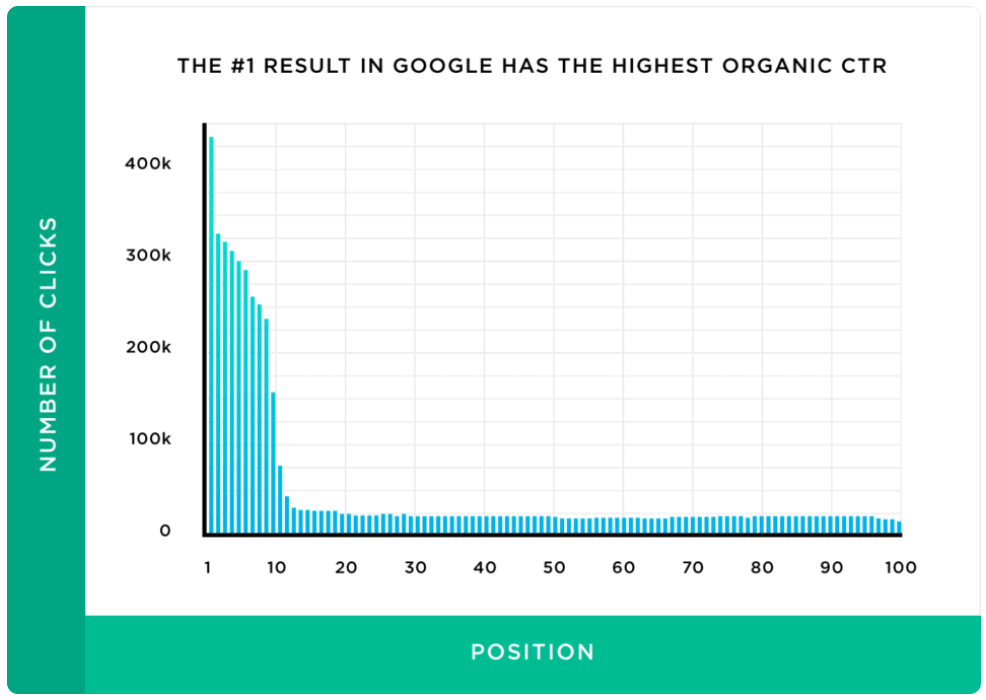
It is evident from this graph that if we manage to get our SaaS service’s pages to rank somewhere on the first page or in the top 10 (preferably getting first place), we can expect a significant number of clicks coming from organic search.
This is the reason why many SaaS services turn to SEO. They want to make sure that their content, copy, and presence on the internet (in the form of others talking about and mentioning them) are done in such a way that search engines give them top ranks in their results.
Benefit #2: It raises brand awareness
Many software companies, especially small businesses and startups, are struggling to get their target audience to recognize them. There are more than 25,000 SaaS products out there in the world, and having people notice you among this bunch is a significant challenge.
Thankfully, search engine optimization can be of great help to you in overcoming this challenge.
Just imagine how much attention your brand can get if it appears on top of search results for queries related to the nature of your business. Even if searchers are not clicking on your pages, they are still physically noticing your brand and memorizing them.
If you appear as the top result for the keywords that your target audience is using, that’s an entirely different story. In this case, other than people noticing you and visiting your website, they probably also consider you an authority and a reputable website worth their trust.
Let’s take a look at the example of HubSpot.
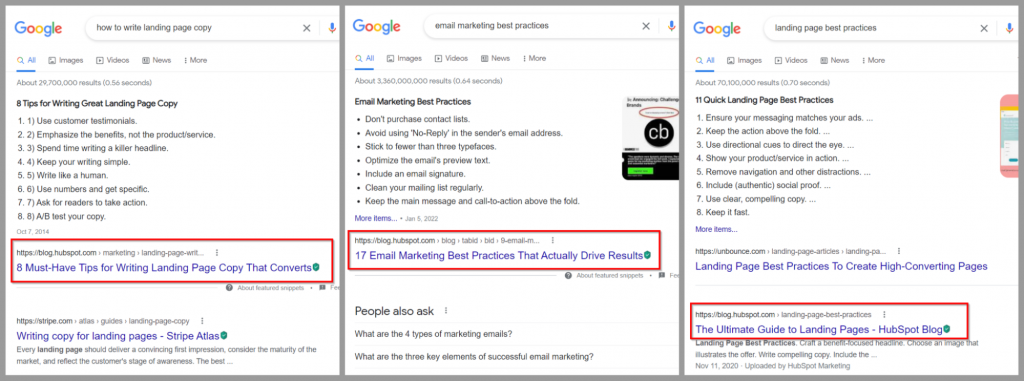
We searched for three marketing-related topics and found HubSpot either in the first or second place in the respective SERP. If we were not familiar with this marketing SaaS service, then HubSpot would definitely leave a positive impression on us.
Benefit #3: It generates conversions
Search engine optimization is not just about driving traffic. Another perk of implementing an SEO strategy is increasing the quality of your traffic.
There are many reasons why SEO brings high-quality traffic, but the main one is because you have something people were looking for. It is either the compelling guides or blog posts that have matched the search query of your visitors. In both cases, your website visitors are there because you have sparked their interest in what you have.
In summary, SEO is an excellent strategy for SaaS marketers as it brings stable organic traffic, ensures quality lead generation, and increases your brand’s popularity on the internet.
Up next, we will discover search engine optimization and some of its essential elements.
3 SaaS SEO Elements to Keep in Mind
Search engine optimization is a complex topic. No wonder there are dedicated SEO specialists and even SEO-only agencies (for this, check out our guides on white label SEO and link building agencies).
But if we try to break SEO down a bit, we will be able to identify these four general areas:
- On-page SEO that encompasses your content marketing strategy, optimizations, internal linking, etc.
- Off-page SEO included link building and social media presence.
- Technical SEO works on metadata optimizations and technical issue resolutions.
- Local SEO focuses on increasing local search ranks for physical businesses.
We would probably need to write an entire book or a couple of them to cover these areas, as each one has lots of intricacies and details that SEO experts need to learn.
Thus, let us focus on three crucial elements of search engine optimization and explain those to you instead.
Element #1: Search intent
Search intent is an SEO term that describes the motivation and reason for a person to search for something on the internet.
The “intent” of searching can be different for people depending on what they expect to find. Sometimes they ask something and are looking for the answer, or they want to learn about a specific topic. Sometimes they are simply looking for a product or service to buy.
Search engines have become quite smart and can understand the context and meaning behind your search queries. For instance, the results can differ based on your location. If you search for “bulls” in Chicago, you will see results related to the famous basketball team. But searching for “bulls” in Madrid will show you completely different results.
In SEO, understanding search intent is critical. If you are optimizing your SaaS product pages, you need to target the keywords with an intent for purchasing subscriptions. Otherwise, search engines will consider your page irrelevant to what people expect to see in the search results, and your rankings will either drop or be gone.
Now let’s study the four types of search intent and understand how they work.
1) Informational search intent
The name of informational intent speaks for itself. These are the terms people type in the search engine to find an answer to their question or a piece of information they need.
To illustrate this type of search intent, let’s review the example below:
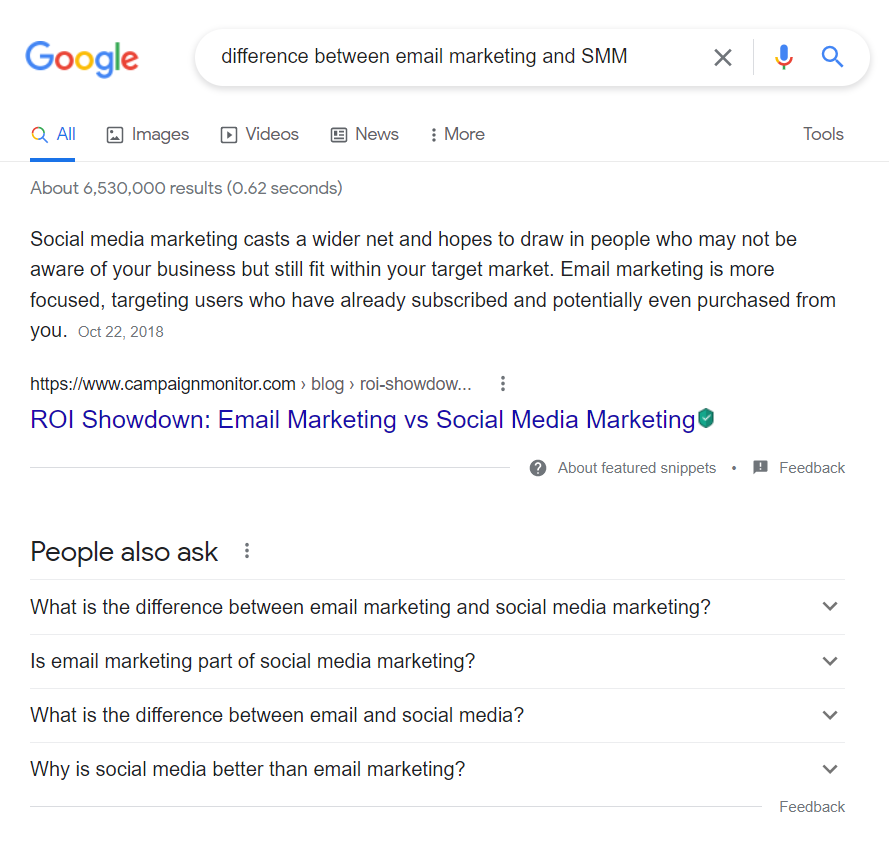
Here, we have typed the keyword “difference between email marketing and SMM”. It is evident from the term itself that the person is looking for an explanation of how email and social media marketing differ from each other.
In the context of SaaS applications and SEO, people typing informational intent keywords do not plan to take action and purchase any product or sign up for anything. They are probably doing research instead and want to learn about your product or niche first.
The best practice for you is to optimize your blog posts, white papers, help center pages, and any other learning/informative content on your website for these target keywords. If done right, search engines will understand that your content provides valuable knowledge to the people seeking relevant information and will give your pages a decent rank.
2) Commercial search intent
With the commercial search intent, people are typing the keyword with the desire to browse and find a product or service.
Here’s what a typical keyword with commercial search intent looks like:
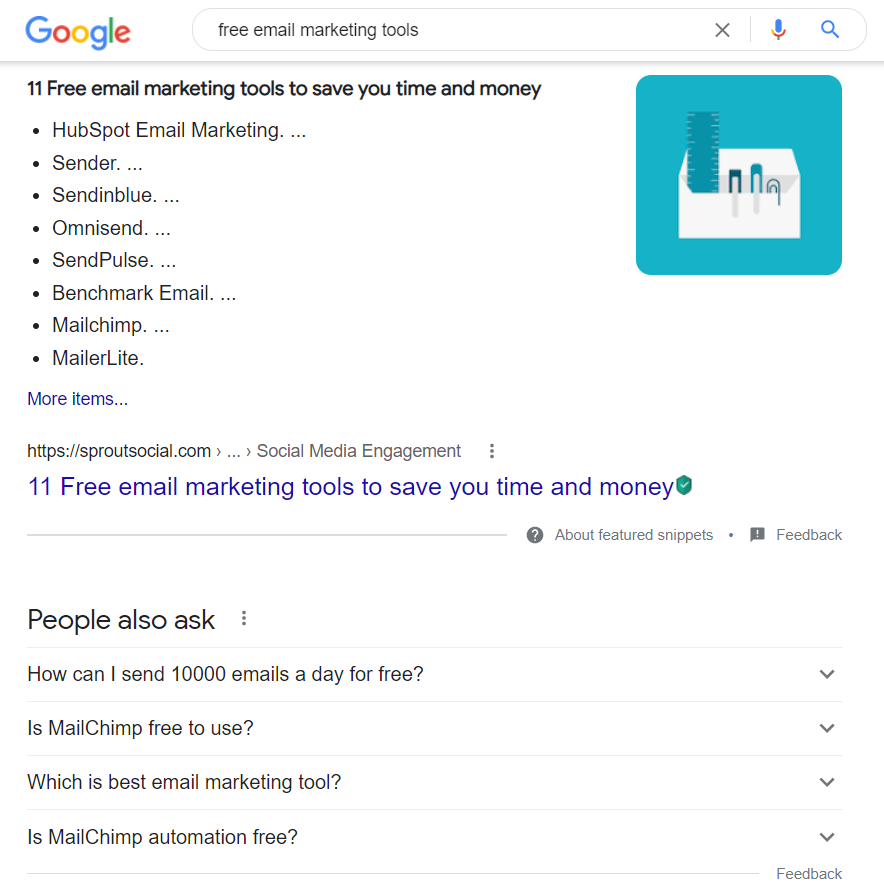
Here, our keyword, “free email marketing tools”, and the results the search engine has shown us suggest that people use these search terms to find out about different email marketing services and compare them.
In general, people use the commercial intent keywords to:
- Discover providers and brands for the type of product they are interested in.
- Research product specs and read reviews about them.
- Compare several products and services in the same category to decide which one they want to go for.
- Look for free trials, tests, promotions, and discounts on the products of their choice.
As a SaaS service marketer, it is best for you to target commercial keywords with comparison guides (e.g., Webflow vs. WordPress), list articles and alternative-to pages (e.g., Hubspot Alternatives), as well as reviews.
3) Navigational search intent
Navigational intent is quite straightforward too. In this case, people simply want to find and visit a specific website and type a keyword relevant to their destination.
A typical keyword with navigational intent will look something like this:
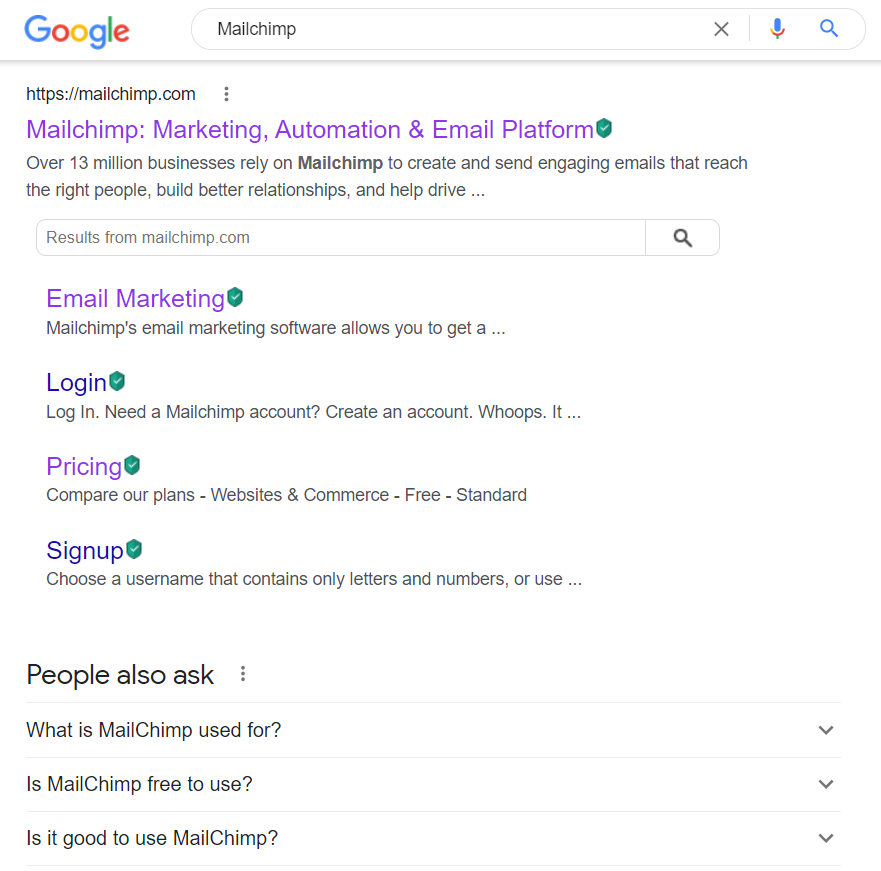
The person who has typed the keyword “mailchimp” clearly wants to find the URL that takes to the Mailchimp website. The search engine has understood this intent and placed Mailchimp’s homepage atop the SERP.
For the SaaS marketing team, you should target your primary pages (e.g., homepage) with these keywords to make sure that people find you easily.
4) Transactional search intent
With the transactional search intent, people are sure that they want to purchase a specific product and are seeking a page/shop where they can do it.
Here’s a transactional keyword for an email marketing tool:

A person typing this keyword clearly wants to purchase a Mailchimp Premium plan and tries to find the page where to do it.
In the case of your SaaS product, you can target all of your pages where people can subscribe to your service.
Element #2: Sales funnel content
The process of people buying a product is not as straightforward as you would imagine. There are many people out there who don’t even know about your existence. There are also others who might know you but might not be really interested in your product.
Thus, before bringing people to your subscription and checkout pages, you need to inform them, spark their interest, and gain their trust.
For this, the digital marketing world has defined three distinct steps in the sales funnel:
- Top of the funnel, where you create awareness.
- Middle of the funnel, where you build relationships and generate leads.
- Bottom of the funnel, where you guide them to convert.
The funnel with this distinction will look like this:

In the eyes of content marketing, other than just focusing on creating high-quality content, you need to make sure that all your content deliverables belong to one of these three funnel steps.
Let’s move on to discussing each funnel stage and deciding on your content strategy for each.
1) Top-of-the-funnel content (TOFU)
At the top of the funnel, your primary objective is to let people know about you and how your product is solving their problems.
We mentioned the problem/solution fit on purpose. At this stage, people are either casually browsing interesting content without realizing they have a problem (this is where you can make them problem-aware) or they have pain points and want a relief (this is where you jump in with your solutions – making them solution-aware).
To have a better understanding of the content for this stage, let’s examine this blog post.
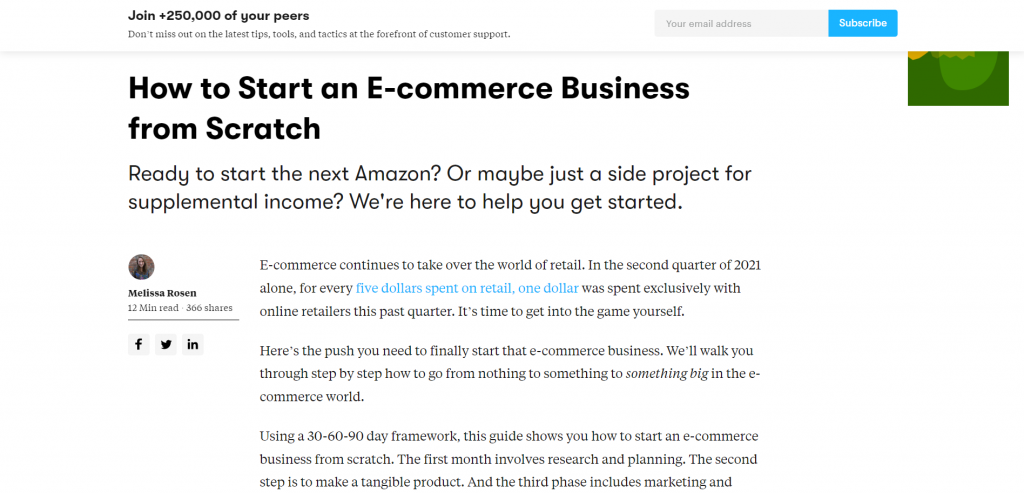
Groove, a support-oriented email tool, has posted a guide on starting an eCommerce business. The chances are high that Groove is targeting online shop owners as its potential customers. Thus, by creating such content, they attract relevant people to their website.
Examples of TOFU content are informational blog posts, infographics, and guides.
2) Middle-of-the-funnel content (MOFU)
At this stage, your goal is to create trustful relationships with your potential customers, as people at the MOFU stage will usually start comparing your product to others or research your pros and cons.
Here’s what MOFU content looks like.
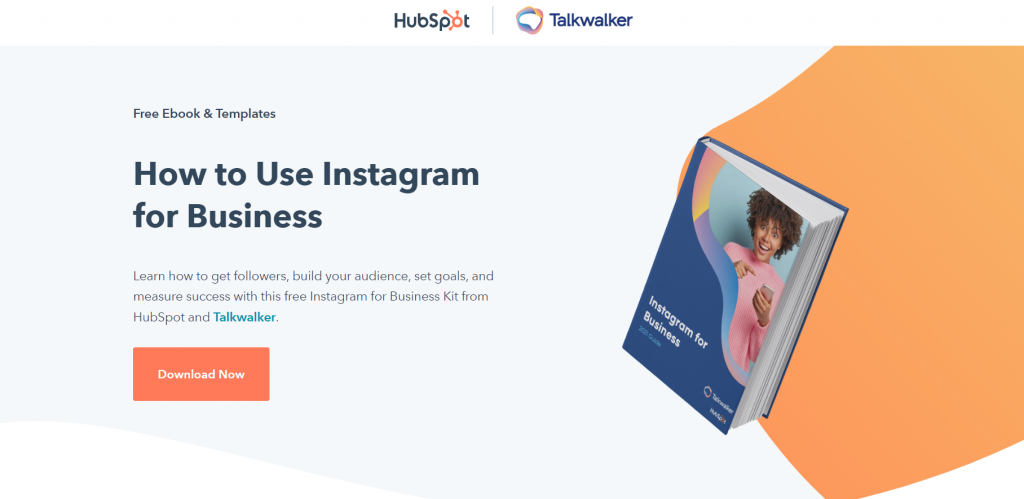
The example above is an eBook by HubSpot that helps increase trust among its website visitors.
Popular types of content here are white papers, research reports, and case studies.
3) Bottom-of-the-funnel content (BOFU)
The bottom of the funnel is where you bring your relationships with your leads to their culmination – converting them into paying customers.
Your content at the bottom of the funnel needs to give that last extra incentive, FOMO, or reassurance that your leads need to be completely positive about purchasing your product.
Now let’s look at a great sample of BOFU content – a comparison page.
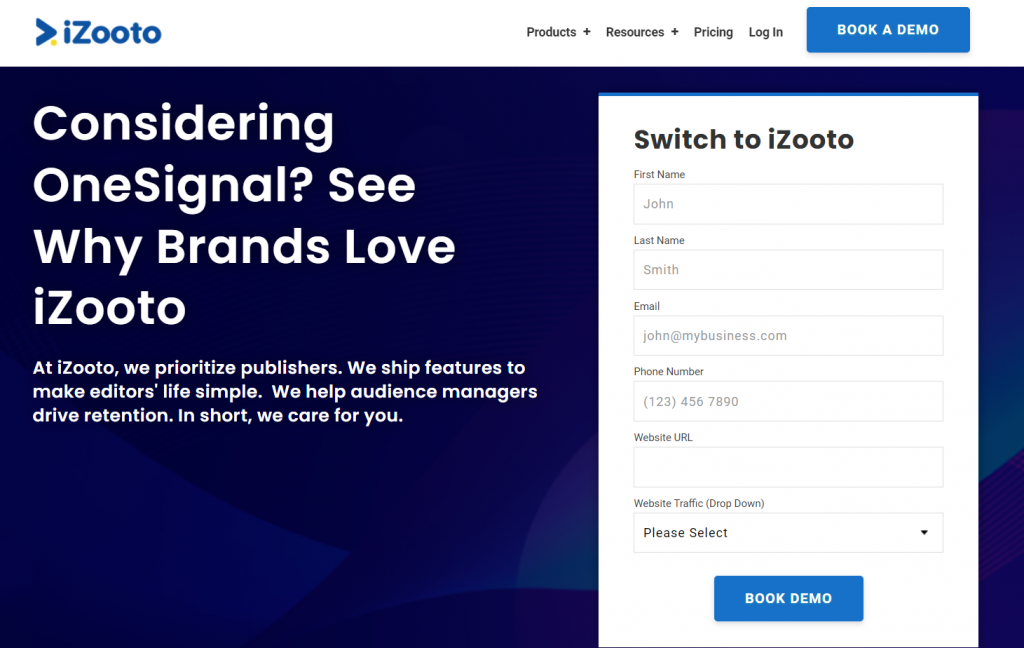
iZooto, a web push notification SaaS software, has a separate page for comparing itself to OneSignal which is one of its competitors.
Other types of BOFU content include spec sheets, assessments, and free tools.
Element #3: Content repurposing
Content repurposing is the process of creating new content formats by reusing elements of the content you already have to expand its reach.
Despite many benefits, content repurposing is not a very common practice. According to a Curata survey, only 1/3 of digital marketers have a process in place for this strategy.
And yes, there are several solid reasons and benefits for repurposing your content. In particular, it is great for:
- “Recycling” old content and giving it a new chance to grow and attract traffic.
- Using multiple distribution channels for the same piece of content, thus, reaching out to new audiences.
- Getting the most results from your content team deliverables and saving on content creation costs.
By the way, do not be afraid of the term “recycling”. If you do content repurposing right, you will not face any duplication issues and penalties from search engines.
If this practice gained your interest, let’s introduce you to some of the common ways marketers repurpose content.
1) Compiling a guide out of old blog posts
This approach is great if you have multiple old blog posts covering the same topic or related topics. You can give these posts another chance to thrive if you combine the content in them into a more extensive long-form guide. By the way, long-form content (2,000+ words) performs better than articles of average length (~1,000 words) by attracting twice the traffic.
2) Posting corporate presentations online
If you have any presentations with helpful content that you are using inside your company for meetings, you can get traffic out of them too by posting these presentations on platforms like SlideShare.
3) Recording webinars to post on YouTube or publish the transcripts on the blog
Many SaaS marketers use webinars to convert leads into paying customers (in fact, 83% of them find it quite effective). But you can also record and post it on your YouTube channel or even transcribe it into an article and post on your blog to bring more conversions out of YouTube without the need for new webinars.
To conclude, you can significantly increase the outcomes of your SaaS SEO efforts if you get the search intent right for your keywords, target them with TOFU, MOFU, and BOFU content, and repurpose that content to target more audiences and marketing channels.
Now that we know about these SEO elements, the time is to list the steps you need to take to get your SaaS SEO operations started.
How to Get Started with SEO for Your SaaS Company
Despite the fact that search engine optimization is a complex topic, getting your SaaS SEO operations going is not as hard as one would expect.
To make that process smooth and easy for you, we have broken this process down into five main steps. Coming up next, we will list these steps and introduce you to their details and intricacies.
Step #1: Set objectives
No matter if it is for SaaS websites or any other business, getting the goals and KPIs right is critical for you.
Without any concrete goals set, your SEO activities lack alignment, and thus, you will not get the results you were hoping for. On the other hand, if you have your goals set but do not have the right KPIs or metrics at all, you are risking operating “blind” and facing numerous issues.
But if you have the necessary goals and KPIs set, you can expect to benefit from the following:
- You can monitor and identify underperforming strategies or pieces of content and fix them.
- There are expected outcomes set, and it is easy to tell if your SEO operations are bringing the results you want.
- You can compare your current results with that of the previous month/year and see if there is any improvement and if you have managed to raise your bar.
Returning to the context of SaaS companies and their SEO teams, some of the goals you might want to consider setting are to increase your traffic to a certain point, increase the MRR, attract a set number of MQLs or SQLs, decrease the CAC, and more.
Step #2: Define your personas
SaaS tools and services are built to get a specific job done for their customer or solve a pain point that they have.
In order to succeed at marketing any SaaS tool, you need to know about these problems very well and have a proper understanding of the people who experience them.
This rule applies to search engine optimization of your SaaS service, too, as you need to make sure that your content, keywords, and other aspects of SEO are done right, and they are properly communicating your SaaS service’s problem/solution fit to the target audience.
Defining a buyer persona is not hard either. Here are several tips for your consideration:
- Researching and identifying your potential buyers based on public data on the internet.
- Taking advantage of the data gathered by your UX, Product, Sales, and Customer Support teams to identify valuable insights and build your personas based on them.
Finally, you can use the data of your existing customers and even ask them to conduct a survey.
Step #3: Conduct keyword research
Keyword research is the process of identifying the search terms that your potential customers will use to find your product or your content.
With proper keyword research, you will avoid these risks:
- Creating content that targets the keywords that either nobody is searching for
- Your product is irrelevant to these people
Both are reasons why 90% of web pages have zero organic search traffic.
In terms of the process itself, we have a couple of valuable pieces of advice for you:
- Have a good understanding of the industry you are in, and identify your seed keywords.
- Check the keywords that your competitors’ content is ranking for.
- Identify the content gaps between your existing content and your buyer’s journey.
- Take advantage of specialized tools (such as Google Search Console, Ahrefs, Semrush, and Moz) that can automate and help with your keyword research.
As soon as you have your keywords identified, you can move on to analyzing them and choosing the best ones for your SaaS product. Digital marketers usually analyze and choose keywords based on these five metrics:
- Search volume
- Clicks
- Traffic potential
- Keyword Difficulty
- Cost Per Click (CPC)
Finally, when you have your keywords selected, you can move on with creating new content and optimizing the existing content pieces for these keywords.
Step #4: Create comparison & alternatives pages
Comparison and alternative pages are excellent content deliverables to cover your bottom-of-the-funnel area. When your prospects reach this stage in the funnel, they are likely to start comparing several SaaS services to find the one that fits them the best.
You want to make sure that your SaaS is on this list and looks fabulous compared to others.
Essentially what SaaS marketers do at this point is create ‘{your_service} vs. {competitors_servce}” blog content or even landing pages, where they highlight all the competitive advantages their service has. They target specific keywords for these pieces of content, too, like “Mailchimp alternatives”, “Mailchimp vs. {your_service}”, and others.
Another approach is to create an alternatives list to a well-known competitor. While there are many websites and services with a similar intent out there, it should not stop you from making your own list where you can make sure that your product looks and feels better than others. Be careful to keep this list natural, neutral and objective so that it does not look like an obvious self-advertising.
Step #5: Don’t overlook off-page SEO
Content marketing is critically important for the success of your SaaS SEO efforts, but it is not enough. You should also pay attention to the so-called off-page SEO.
Off-page SEO includes all of the tactics digital marketers use to develop your SaaS tool’s reputation online. Some of these tactics are link building (including outreach with optimized templates and guest posting), brand awareness SEO campaigns, social media, and others.
Link building, in particular, is among the most effective ways (it is a major ranking factor in search engine algorithm) to improve your reputation (also known as domain authority) in the eyes of search engines, increase your rankings, and drive relevant traffic into your website. To support our point, let’s take a look at a research of half a million backlinks by Similarweb below.
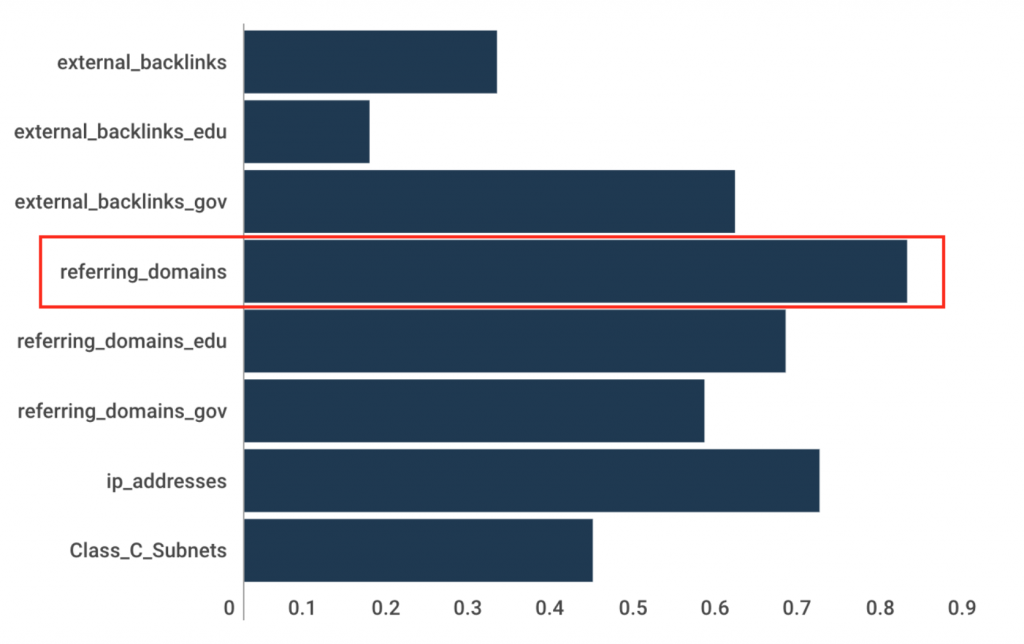
The chart above shows the correlation ratios between traffic and various backlink-related factors. Here we can see that the number of referring domains has more than 80% correlation with the number of website visits.
To sum up, by following our list above, you can have an easy and quick start with your SaaS SEO operations.
Now Over to You
With a properly-executed search engine optimization strategy, you can create a predictable and stable inflow of organic search traffic to help your SaaS service grow its MRR in a sustainable manner.
We hope that the knowledge we passed to you in this guide will help you with implementing your own SaaS SEO strategy. Good luck marketing your service and growing it!
If you would like to access more learning resources about digital marketing, check out our blog.
Frequently Asked Questions (FAQs)
Q1. How important is SaaS SEO?
The importance of implementing SEO for your Software as a Service (SaaS) tools lies mostly in its ability to facilitate the organic growth of your software.
While you might resort to paid advertising (PPC) to generate revenue, relying solely on it is not a long-term and sustainable solution. Depending on the use case, either PPC or SEO will be more relevant to you, but the best practice is to have them both at the same time. With their combination, you are creating a consistent flow of organic traffic and a stable conversion rate that can help you grow in the long run.
Q2. What is SaaS content?
SaaS services can create various kinds of content that can target different stages of the conversion funnel.
Top-of-the-funnel content examples are educational articles, guides, and infographics. White papers and case studies are some of the Middle-of-the-funnel content types. Finally, there are Bottom-of-the-funnel content types, such as testimonials and spec sheets.
Q3. What is a SaaS marketing strategy?
SaaS marketing strategy encompasses all the digital marketing activities and processes that help a SaaS company promote its services and acquire leads who will eventually become paid subscribers. For instance, B2B SaaS SEO agencies do activities such as checking your pages for indexing, content marketing, keyword research, SEO audit, metadata optimizations (e.g., meta descriptions), and more within the scope of their SaaS marketing strategy.
Q4. What are examples of SaaS businesses?
Some of the most popular SaaS businesses are:
- Slack: A workspace communication tool.
- HubSpot: An all-in-one digital marketing solution.
- Intercom: A live chat solution.
- Freshbooks: A service for accounting.
- Zoom: A video conferencing solution.
- Trello: A task-management and tracking tool.
Overall, there are around 25,000 SaaS services out there.

Sona Kalantaryan is a senior digital marketer with a creative past. Big fan of high cinema and well-optimized landing pages. She authors guides by sharing the best practices and does it the right way!
